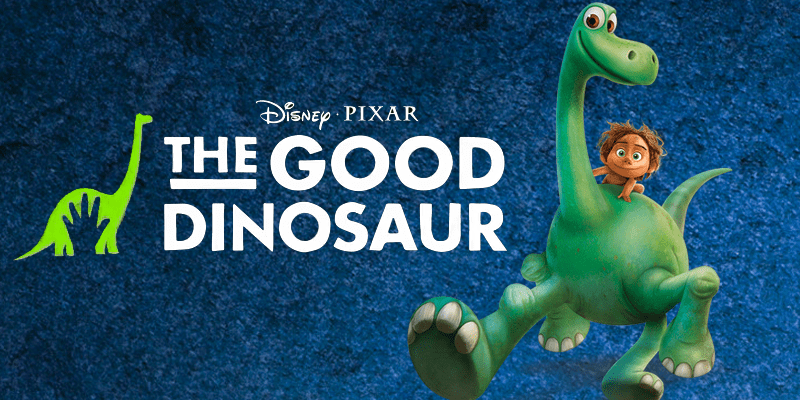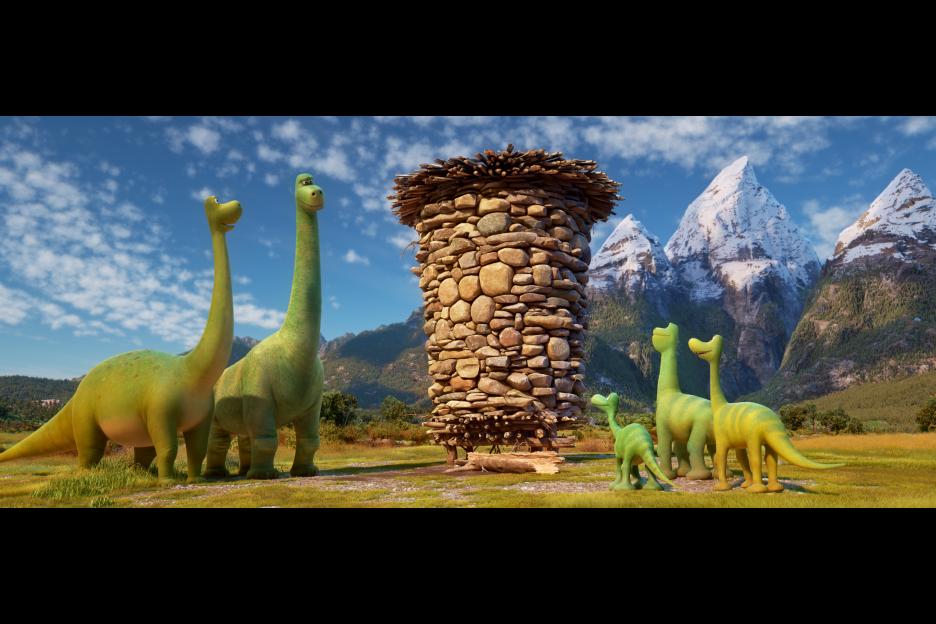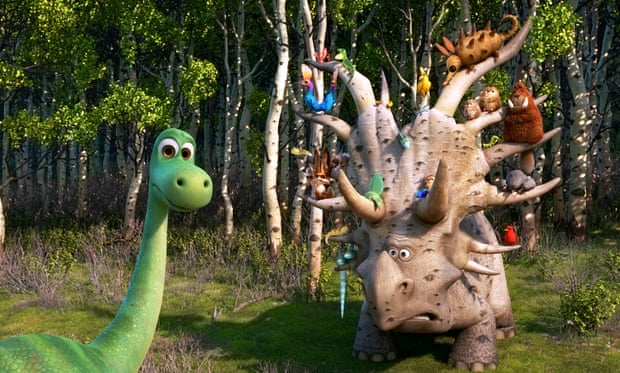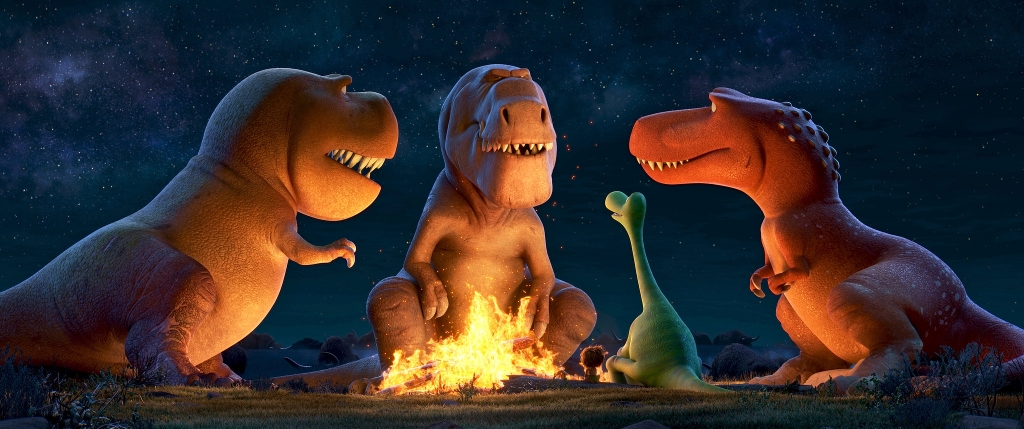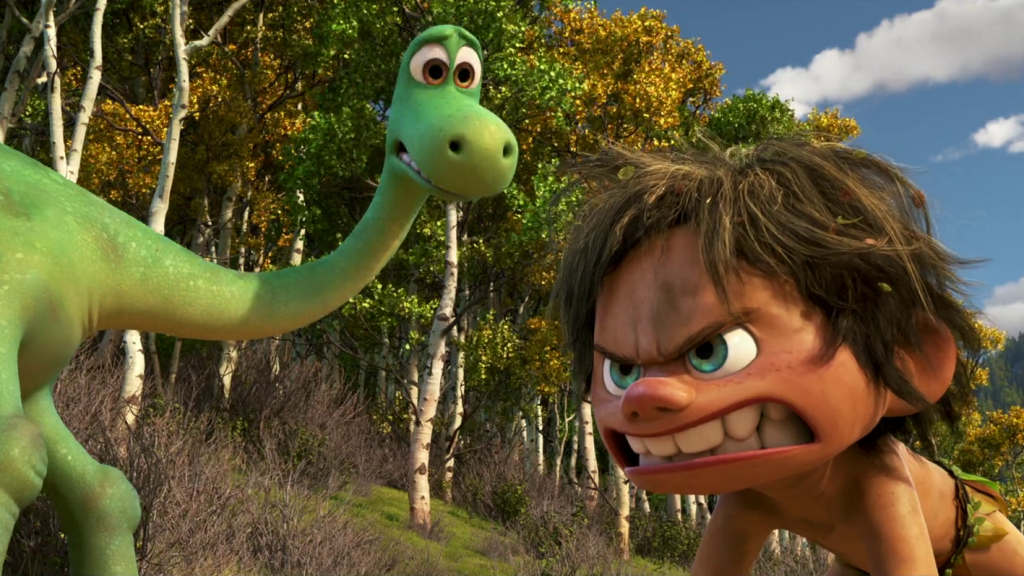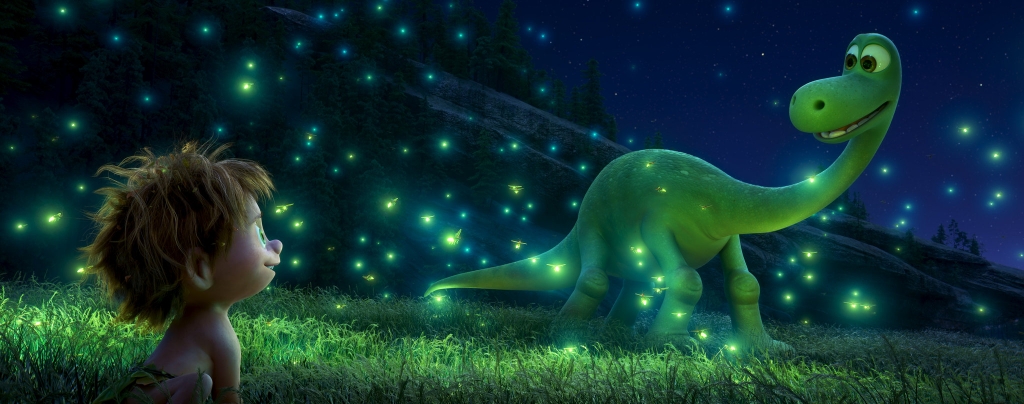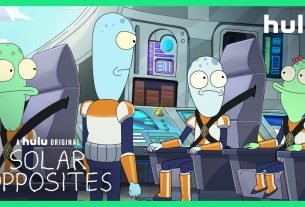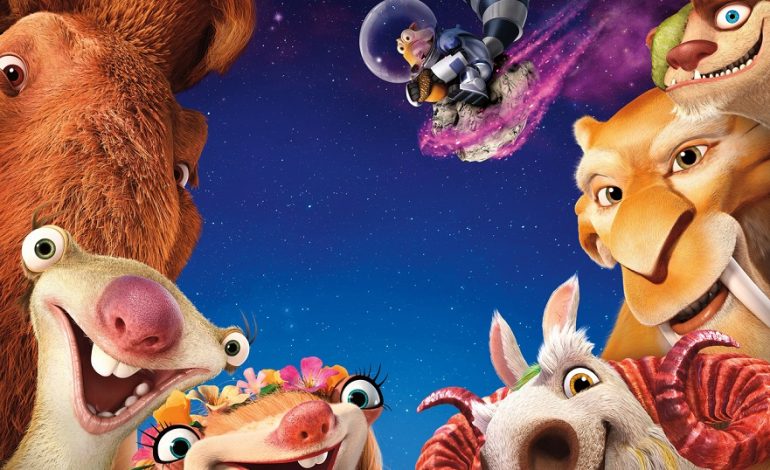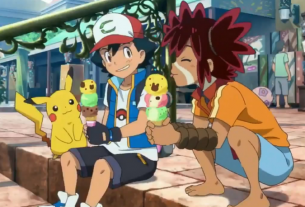Blink and you may miss the sly joke that sets “The Good Dinosaur” on its enchantingly eccentric way. It begins with a near apocalypse 65 million years ago and an asteroid racing toward Earth. And while that’s around the time, more or less, that science hypothesizes the dinosaurs bit the dust, the wizards at Pixar have forged another creation story. Instead of crashing, the space rock zips past the big blue marble. Fast forward a few million years to what looks like the American Northwest, where two apatosaurs are farming the land, tilling the soil with honest sweat and giant noses.
Opioneers! O weirdness! Animated movies teach us how to watch magically strange, sometimes furry worlds, making it easy to go with the unfamiliar flow. As the flyover asteroid suggests, “The Good Dinosaur” is charmingly different, but its oddness sneaks up on you only after the filmmakers lay out some storybook bona fides. Here, the once-upon-a-time begins with Momma (soothingly voiced by Frances McDormand) and Poppa (Jeffrey Wright) having three babies, who hatch within seconds of one another. The runt turns into a scene-stealer, Arlo (Jack McGraw), a pea-green pipsqueak who, after cautiously tumbling out of his shell, grows into a wee gentle giant.
The first 20 minutes or so of “The Good Dinosaur” are dedicated to the family’s life together on the farm, a large spread that’s nestled next to a jagged mountain range and dominated by plowed fields and a house the size of an airplane hangar. The farm has its modest amusements, visual and verbal, including a pen crammed with ferocious prehistoric hens that alive look halfway plucked. (You don’t see a kitchen or a waiting ax, so presumably the family gobbles the eggs, not the birds.) The director Peter Sohn, working from a story he concocted with a small posse (Erik Benson, Kelsey Mann, Bob Peterson and the screenwriter Meg LeFauve), lights a teasingly long fuse.
By 11, Arlo (now voiced by Raymond Ochoa), is in full possession of his fear, which inspires some comedy and leads to some tender father-and-son moments. These include a nocturnal walk with Poppa, who, with his long, agile tail and the help of swarms of fireflies, draws phosphorescent swirls in the grass, a preview of the more visually entrancing passages to come. Arlo’s fear soon sends him, like a really big Bambi, off on a lovely, daft, gently surreal and perilous journey. And, somewhat like Bambi, he initially sets off on that odyssey alone after a storm first sweeps away Poppa — a catastrophe that’s blunt and subtle, delivered with panicked shouts and sealed with a merciful cut to black — and then sweeps away Arlo, too, leaving him stranded, frightened and far from home.
There’s a lot of strange weather in Arlo’s world, a violent churn that suggests the threatening turbulence of the dinosaurs’ climate and ours. Clouds don’t merely gather, they also boil, creating whirlpools that bring monsoonal rains and swollen waters that defeat leviathans in an instant, as casually as a flick of Mother Nature’s wrist. If “Inside Out,” the last Pixar movie, asked what makes us human (laughter, for one, salted with tears), “The Good Dinosaur” suggests that there’s a great deal more to the story than we Homo sapiens. Here, nature isn’t a backdrop or an afterthought, but the main event — a buzzing, blooming wonder from the soft pink of a sun-kissed sky to the crystal waters that Arlo runs alongside and the huge pines that vault over him like a cathedral.
So, whose extinction is this, anyway? Not anyone’s, as far as this quietly hopeful movie is concerned. In its outlines “The Good Dinosaur” spins a familiar tale in a boy’s own story that’s shaped by the usual highs and lows, frowns and smiles, with heart-swelling triumphs and even some Boy Scout-style bivouacking when Arlo builds a shelter out of trees. Except that here the boy is a talking agrarian dinosaur, who, after his calamitous separation, encounters a howling, snarling, scrambling, barking, nontalking human wild child who quickly becomes Arlo’s faithful companion whom he names Spot (Jack Bright, a squalling a cappella orchestra of one). And, just like that, in the beginning there was a dinosaur — followed by a kid scampering after him on all fours.
